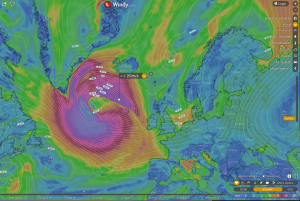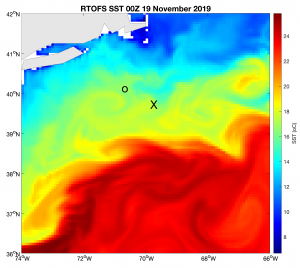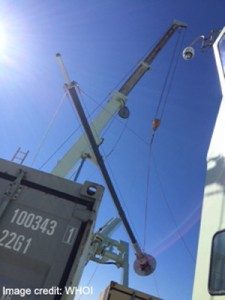The X-SPAR:
An expendable drifting spar buoy for measuring air-sea interactions
Accurate estimation of the atmosphere-ocean heat, moisture, and momentum fluxes from in situ measurements over the global oceans is a key component towards understanding and predicting changes in the energy and water cycles. Impacts of the surface fluxes on the atmospheric and oceanic boundary layers cross a wide range of scales, from mesoscale ocean eddies to hurricanes to western boundary currents and storm tracks, to ENSO and beyond. Improved satellite retrievals that can be used for flux estimations are key to many of these science issues, and high-quality in situ measurements are key improving these estimates. Improved sampling of air-sea fluxes is also key for improvements of coupled weather and climate models. These needs have been highlighted in recommendation for a global array of flux observing platforms, including moored and drifting buoys. To meet this goal will require innovative and low-cost platforms.
WHOI researchers are world leaders in making observations of the marine boundary layer and ocean surface layer, using these and other data and models to estimate air-sea fluxes. A team lead by John Toole, James Edson, and Carol Anne Clayson have developed a low-cost spar buoy called the X-Spar. The X-Spar concept is a free-drifting spar buoy with the ability to support a variety of sensors that observe processes contributing to air-sea interaction. This can include a meteorological direct covariance flux system that directly measured air-sea stress and heat flux (the DCFS) and associated bulk observations (for air temperature, pressure and humidity), short- and long-wave radiation sensors (for estimating those contributions to air-sea heat exchange), wave-sensor(s) (for 1-D as well as directional surface wave spectra) and temperature/conductivity sensors (that will return upper-ocean temperature and salinity observations). As such, the X-Spar instrument system can provide atmospheric forcing and wave data that is of higher quality than are obtainable from ships, surface gliders, or traditional buoys.
This new autonomous platform will capture high frequency atmosphere-ocean coupling without the need for a fixed buoy or extensive research vessel time, providing this much-needed but difficult and typically expensive data for a fraction of the cost of other platforms. Novel features of this spar buoy include a low-cost, simplified design and an on-board processing system allowing for real-time telemetering of the data. Both of these features allow for the buoy to be expendable, with a design life dependent on the sensors and batteries employed for the experiment but with common configurations from six months to one year.




